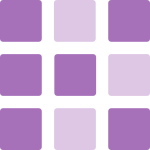Erasure correcting codes for humans

Using kodo, developers can easily integrate erasure
correcting codes to
meet their specific needs.
The kodo software library implements a wide range of erasure
correcting
codes ranging from novel codes such as Random Linear Network
Codes to
traditional codes such as Reed-Solomon.
Kodo is cross-platform which makes it easy to deploy your
code on a variety
of chips and platforms.